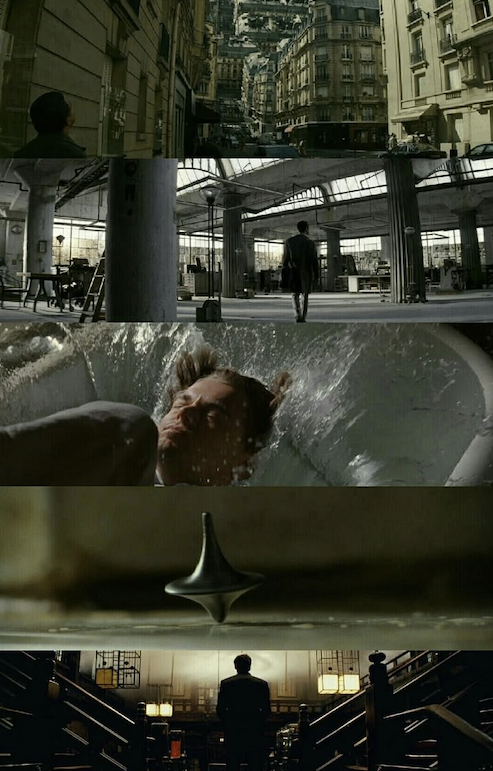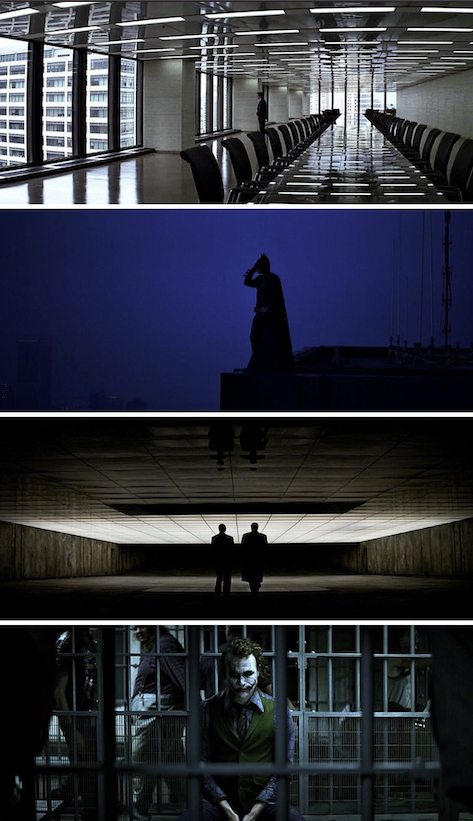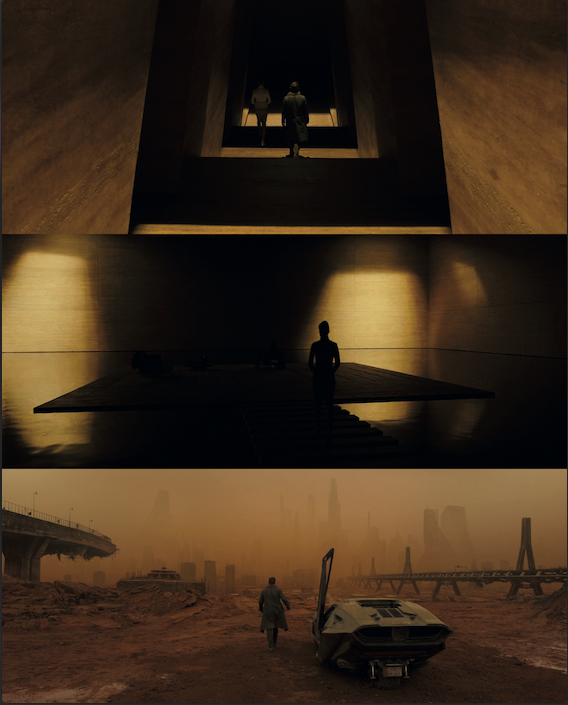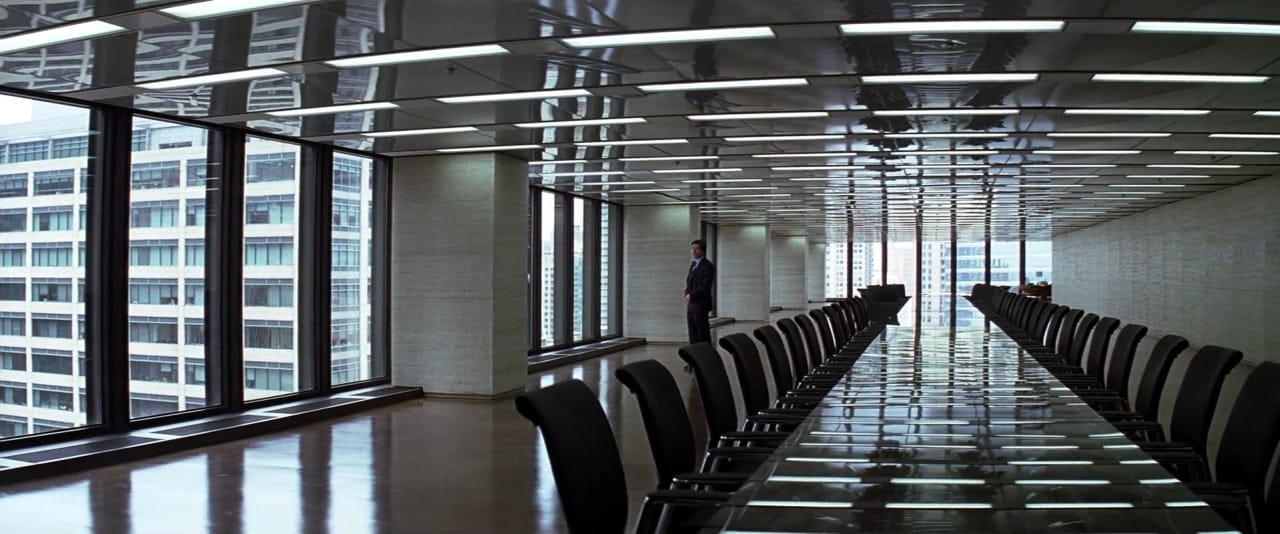The Cage of an Amoral Metaphysics Over Art.
We have gone through a trend, lasting at least the last 20 years in cinema, of something referred to as "Heightened Realism". A preference for shots which look slightly dull, yet somewhat overexposed. The technique is often to take the natural light already existing in a shot and subtly increase it. A dull effect is not what one might expect from increasing light in a scene- yet because only the existing light is being raised, it ends up muting the subtlety of the colors that sit quietly in the frame.
The result is a feeling as though we are right there in the shot with the subject - yet entirely as passive observers. Or perhaps more precisely, we’re overlooking the scene in a cold, scientific, god-like manner. The sterility of the effect, and how it separates the audience from the emotional life of the scene, is perhaps the aspect of it which is most overwhelming.
It’s a cinematographic style that appears dull on the surface. It uses “natural” lighting, a certain graininess, and avoids any sense of creative risk in color grading or light design. It resists stylization in favor of something that pretends to be close to reality but is, in fact, just another aesthetic decision.
Christopher Nolan is perhaps the most famous for this style. And the “scientific observer” quality of his work goes beyond just the visuals. It extends to the sound - audiences have often complained they can’t hear actors speak their lines clearly, just as a distant observer might struggle to pick up speech from far away. The music, too, often follows the same formula: naturalistic, but pushed, exaggerated, heavy.
The key to note perhaps though is that this Heightened Realism is anything but real and is just another style. Beautiful yes, but just another style choice like every other.



To those of us who appreciate a better metaphysics though; the parallels between this kind of thinking and an amoral metaphysics - which denies any sort of human emotion or moral judgement - is obvious. We live in a scientific age, and one creatively trapped by the metaphysics that underpins it. A time where even audiences appear to prefer this kind of aesthetic. A time where science and the apparent necessity of its amoral metaphysics rule the day.
Perhaps this kind of judgement-free thinking is why superhero films have, until recently, dominated the box office. These are stories that allow the breaking of scientific laws - but only by very specific characters. Superheroes are entirely external to us, and even their powers must follow very specific rules for how they break the natural order. They are fanciful, yes - but absolutely everything else around them must remain grounded. Heaven forbid we cast judgement or break free from the self-imposed cage we’ve built.
What’s missed in this way of thinking though - is the simple fact that we exist - and our existence is value. There is nothing but value. Value judgements are just as real, if not more real, than the objects we observe. Even scientific rules begin to fall apart at the subatomic level, but yet we cling to this aesthetic of scientific realism, almost entirely driven by the material success it has brought us.
This cage of scientific-style art is one entirely of our own making. But the good news is—we can break out of it at any time. And we're starting to see the cracks.
Most directly, we can see it in the rise of anime among Gen Z. Anime deliberately shuns realism in favor of something entirely different. But another great example is the underrated yet great and brilliant film Speed Racer.
Dismissed by critics at the time of its release - some even called it “pop fascism” - Speed Racer embraces almost everything that runs counter to the Heightened Realism trend. Except maybe the Heightened part. "Heightened Un-realism" it could almost be called. Indeed Speed Racer is full of heightened color, heightened light, heightened playfulness, heightened emotion and it continually breaks the laws of science to the point where those laws are constantly bent always in service of the story itself. The result is just a great masterpiece of film - one co-incidentally also based on an anime. So now, nearly 20 years later, people are beginning to change their minds on this box office failure. Some are even calling it the most important film of the 21st Century.
But it's not all roses and perhaps this is why I'm writing this post.
Because the latest forthcoming Christopher Nolan film - The Odyssey - might perhaps be the most egregious usage of his Heightened Realism style yet. A film that will bring Nolan’s scientific realism to the Ancient Greeks - a culture that predates our current metaphysics entirely. The juxtaposition between our modern, emotionally detached aesthetic and how things actually were is likely going to be at an all-time high.
Except it won't just be a juxtaposition but a "heightened juxtaposition" if you will..
Nolan, famous for his realistic portrayal of the appearance of a black hole in the film Interstellar, is entirely shunning the experts on what the Ancient Greeks actually looked like or what they wore. Instead he will be pairing his Heightened Realism filmmaking style with entirely fanciful and false portrayals of their armor and dress.
Where modern portrayals often reduce the Ancient Greeks to something stoic, monotone, dominant, and hyper-masculine, they were, in fact, the opposite. They celebrated color and beauty in their clothing. They were emotionally complex, playful, poetic, and deeply involved in democratic dialogue - far from the dominance they are usually associated with today.
A dominance which, perhaps not coincidentally, is plainly visible when animals are observed scientifically. Indeed it is the same value-blind perspective that distorts both our understanding of our uniquely human behavior and the deep and rich fabric of Ancient Greek culture. Our current amoral metaphysics then doesn’t just undermine modern art—it also sustains and enables our misunderstanding of the Ancient Greeks themselves.
Regardless of that exacerbation though; with Nolan's portrayal there is the high likelihood that those who aren't familiar with the Ancient Greeks will be even further led to misunderstand them. The important difference between modern portrayals and how they actually were will be further undermined. While Nolan brings his 'realistic style' of cinema to them, the portrayal of the Ancient Greeks he's looking to show on screen will be anything but realistic.
Which brings us full circle - back to our current metaphysics. It masquerades as the “most real” way of seeing the world, insisting on a detached observer model that excludes value, judgment, and feeling. But in truth, experience itself is soaked in all of those things. Real experience is not neutral. It never was.
As always there’s a better way. The Metaphysics of Quality shows us that. And thankfully, we are starting to move - back toward art that affirms life and its rich tapestry of values and emotions, not merely observes it. And that's a Good thing.

